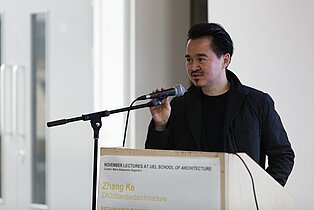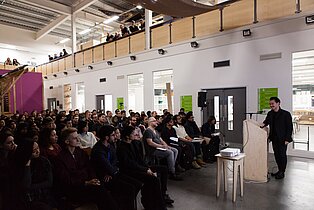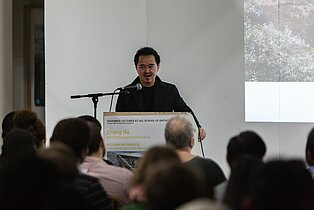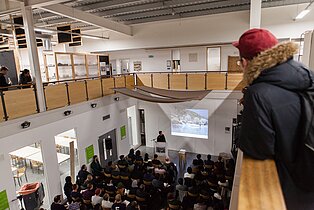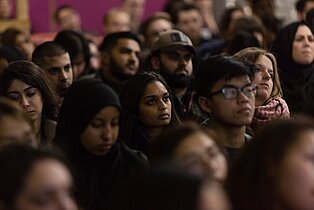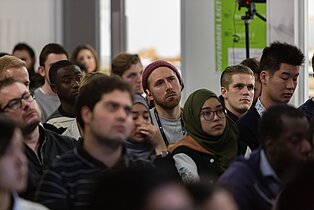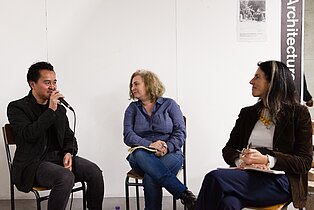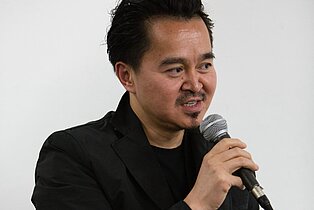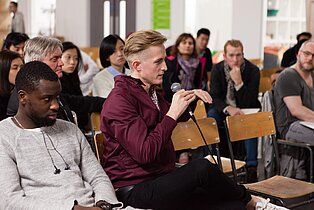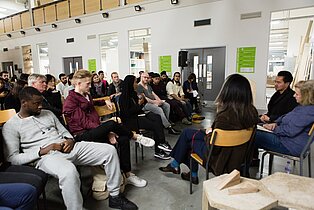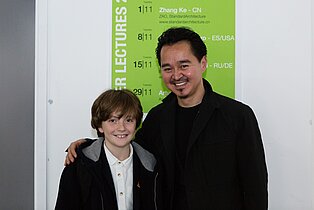Zhang Ke | ZAO/StandardArchitecture | Peking
November Talks 2016 in London: Rethinking Basics
Zhang Ke is founder and director of Beijing-based practice ZAO/standardarchitecture, a multidisciplinary studio working in landscape, architecture, planning and product design. Founded in 2001, the practice has carried out a large range of contemporary cultural projects in traditional and historical settings.
Educated between Tsinghua and Harvard University,Zhang Ke is one of China’s new generation of architects, and an important voice amidst the construction frenzy of urban China.
Through his portfolio of built projects, Zhang questions the corporate conventions of architecture, and brings fresh, uninstitutional thoughts and processes to the discipline. He has won international recognition and awards for his work, and is also a visiting lecturer at Harvard University.
Starting off the November lecture series, Zhang showed a series of his early projects in Tibet, through to his work at the very centre of the city in Beijing, also sharing overviews of projects beyond these locations that exemplify the quietly radical work of the practice.
Zhang’s work in rural Tibet came about through a hiking trip in the Tibetan countryside with a friend, who was the director of a new tourism company for the area. While most architects around him were concerned with winning projects for the 2008 Beijing Olympics, Zhang undertook the commission to create visitor facilities along 60km of remote river canyon.
Tibet is an extremely traditional country with a very specific building language, but the brief was open enough to allow Zhang the freedom to decide on the location and design of the buildings, including a river terminal and visitor centre.
The idea was to do something very clearly, but quietly contemporary, using local materials creatively, and reinterpreting traditional methods of architecture. He approached the project open minded, taking inspiration from the landscape.
Zhang explained when you go to Tibet you can either admire the traditional forms so much that you only look up, and imitate them. Or you can look down on its traditional architecture, and create work that is arrogant and out of keeping with its context. The answer, he explained, is to look Tibet straight in the eye, and to treat each other frankly. This way you gain mutual respect, and freedom of expression to create architecture that is both contemporary and reverent.
Zhang designed the boat terminal with a ramp that imitates the annual rise and fall of the water levels, winding around the Poplar trees that were already growing along the riverbank, and ending suspended over the water. Using a concrete frame, due to the risk of earthquakes, the rest of the building is made from local stone and timber, with the walls built by Tibetan masonry builders. Although distinct in its design, the terminal merges into the local topography, and the wider landscape.
He designed the visitor centre as four rectangular volumes cut into the slope of the land at the entrance of the Grand Canyon of Yaluntzangpu, infront of Mount Namchabawa. Constructed fromone-metre thick masonry stone walls, again the building forms a modern and abstract landscape within the natural panorama.
Zhang described how he won the approval of the client to also create a dedicated space for outdoor contemplation, after discovering a location with a 1000-year-old Mulberry tree at its centre, and Brahmaputra Canyon on the one side and Namchabawa on the other. He went ahead with a simple and purist design, clearing the space, paving it with white stones, and rearranging the rocks to define the boundary. On revisiting the site he found that it has become a popular visitor destination, occupied by local people selling gifts and souvenirs.
Following his work in Tibet,in 2004ZAO/standardarchitecture won the first prize for the tender of the renovation of the Ming Dynasty walls in Beijing, with a proposal to open up the space around the walls for public use and for art installations. It stood apart as the most humble, but culturally sincere of the proposals, and has managed to conserve the original grandeur of the structure whilst transforming the site into a popular public space and visitor destination.
Following this project, the practice undertook a series of urban studies for the renewal of Beijing’s old city, rallying against the persistent problem of the rapid development and gentrification that is taking place, with no clear strategy at its core.
Its Micro Hutong Renewal project took a disused courtyard in the old city and modernised it with concrete and plywood interventions, to create a community hub, modelled on the intimate scale of the traditional courtyard residences that occur throughout the city. Rather than demolishing and developing over the courtyard, the project is a negotiation of old and new, that improves the area for local people, and seeks to preserve this aspect of Chinese cultural history. The project created a dialogue with the government, who partway though gave approval for the project, and a cast replica of the hutong appeared at Beijing Design Week and the 2016 Venice Biennale.
One of Zhang’s key messages, throughout the talk, was that no matter how internationalized discourse around architecture has become, it is by its nature, a practice related to place, and to people at a local level. He asserted that to be truly innovative, every generation of architects has to revisit these basic principals. He added that architecture benefits from a degree of intuitiveness, whereby you allow ideas to subconsciously grow out of a place.
Finally, he emphasized the importance of staying in touch with the motivation to be an architect, and encouraged students to reach out to answer the needs of society directly, taking advantage of the new funding models available, rather than falling back on the corporate model of responding to clients, in order to make money. He emphasized that architects must remain critically engaged with the issues facing a city, and the people that inhabit it at that moment in time, as too often this is a conversation politicians are failing to have.
Video-Interview with Zhang Ke
Visit our YouTube-Channel



